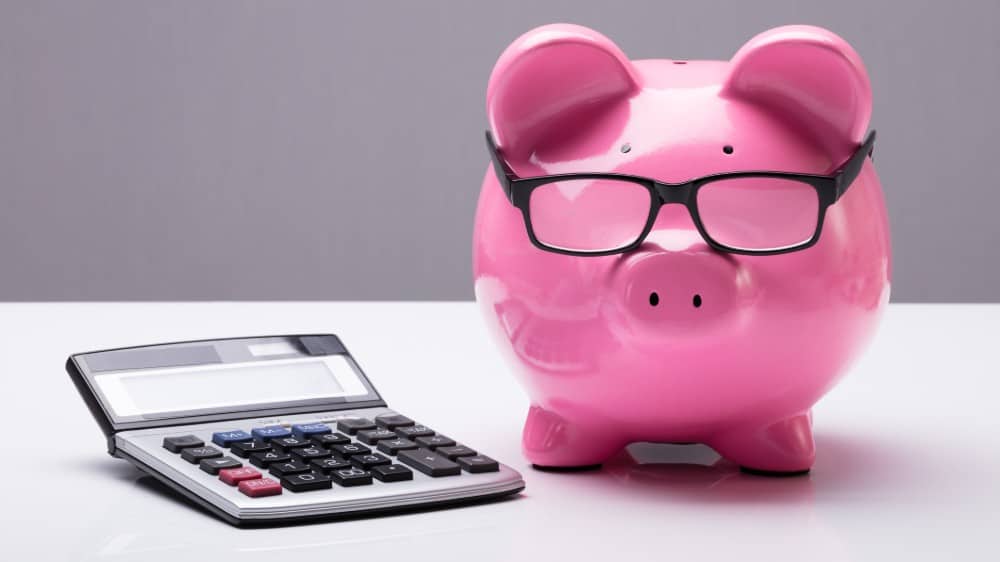It’s already been a tough year for Canadians. After a brutal two years of self-confinement, market volatility, and raging inflation, the war in Ukraine, along with the sanction against Russia, have made the price of gas skyrocket, with food not far behind.
That’s put a strain on our budgets. But it also dampers our ability to save money for retirement. Around half of Canadians are no longer contributing to their RRSP this year — and that’s only a few percentiles higher than last year. That in itself is a scary thought. But when you look at the number needed for many Canadians to retire comfortably, the scariness compounds.
According to a survey by the BMO Financial Group, the average Canadian now believes they need around $1.6 million to retire, which is a 12% increase since 2020. Not only that, but around half of the same Canadians surveyed doubt they’ll ever save enough to reach that amount.
And you can’t blame them. After all, if you’re only saving money, you’ll never get to $1.6 million. Imagine for a moment that you’re putting $1,000 per month into a saving account that yields around 0.50%. How long will it take you to reach $1.6 million? Trust me on this: you’ll need more than a handful of lifetimes to reach that amount.
So, what should the average Canadian do? Well, for one we need to keep putting money aside for retirement. Period. Additionally, we need to make that money work harder for us. And to do that, we need to invest.
Invest
The best time to start investing was yesterday; the second-best time is today. If you want to retire at all, you have to start early. The earlier, the better.
To understand why, let’s look at a chart. Again, let’s just assume you have $1,000 to invest with, and let’s say you’re investing for 30 years. Here’s what your money will look like in 30 years for these four different rates of return.
| Invest for This Long | With This Much Per Month | Compounded Annually at This Rate | Here’s How Much You’ll Have |
| 30 Years | $1,000 | 5% | $836,726 |
| 30 Years | $1,000 | 7% | $1,228,087 |
| 30 Years | $1,000 | 9% | $1,845,474 |
| 30 Years | $1,000 | 11% | $2,831,228 |
If your portfolio hits an ROI of 9% across 30 years — that includes good days and bad — you will save more than the estimated $1.6 million needed to retire comfortably. To get a 9% ROI, you don’t have to invest in anything crazy. In fact, you can invest your money in an index fund or ETF that follows the S&P/TSX Composite Index, and you’d likely see an ROI that’s near 9% over a long period like 30 years.
What about market volatility?
What about it?
Sure, the market is going to be frothy. Some days you’ll feel like your numbers are soaring, while others will feel like someone tossed your portfolio in a laundry machine. You’ll likely see as many dips as a scuba diver, and the red numbers will make your head hurt and your heart bleed.
But for those who invest for the long term, market volatility begins to flatten out. It’s the test of time: those who can withstand the market dips, who have enough inner fortitude to resist selling their shares, will start to see an upward trend.
Even today, you shouldn’t let market volatility stop you from investing. One of the best investing strategies to employ is dollar-cost averaging. Basically, with this approach, you allocate a certain amount to investing purposes every two weeks, month, or quarter. If that’s $1,000 every month, then you buy $1,000 of investment every two months, whether the market is doing well or not.
To get started, you’ll need a brokerage account. Take a look at some of Canada’s top brokerage accounts, and pay close attention to things like trading fees, account minimums, and free educational materials. Once you start, don’t stop: choose high-quality stocks and invest small amounts over long periods of time.








